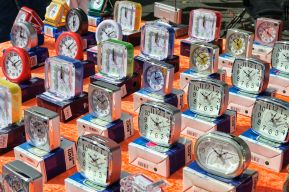TALLER ‘Drawing, Place and the Contemporary Sublime’. 26 de mayo, profesor Stephen Felmingham
20 mayo 2015
| 26 mayo, 2015 |
El próximo día 26 de mayo se impartirá en la asignatura de “Pintura y representación” el taller del profesor Stephen Felmingham del Plymouth College of Art (UK) titulado ‘Drawing, Place and the Contemporary Sublime’.
El curso será en inglés pero contará con traducción y será valorado dentro de la parte de evaluación de seguimiento de la asignatura (0,5 puntos).
El taller tendrá una sesiones para los alumnos del Grupo 1 en su horario habitual de las 11.00 y otra para el Grupo 3 en su horario habitual de las 17.00.
Los alumno del Grupo 2, que tiene clase el lunes a las 10.00 podrán acudir a cualquiera de los dos turnos.
SI ALGÚN ALUMNO QUE NO CURSA LA ASIGNATURA DE “PINTURA Y REPRESENTACIÓN” QUIERE ASISTIR PUEDE HACERLO PREVIA COMUNICACIÓN (Y VISTO BUENO) AL EMAIL:
Para seguir el Taller será necesario traer el siguiente material:
Herramientas de dibujo de la elección del alumno (carbón, pastel, grafito, pintura o tinta o cualquier otro medio gráfico). Necesitarán cuadernos de dibujo y mínimo 10 hojas papel (preferentemente de cierto gramaje y calidad, aunque puede ser papel reciclado de menor calidad) (mínimo 10 hojas). Tres objetos que sean especiales para vosotros, que no sean habituales y que puedan mantenerse fácilmente ocultos en un bolsillo o bolso hasta que se pidan en el taller.
Os adjunto una breve descripción del Taller:
‘Drawing, Place and the Contemporary Sublime’.
Dr Stephen Felmingham will talk about his recent practice-led PhD in drawing, which focussed on research into Cold War bunkers, drawing and peripheral vision. This will be followed by a practical drawing workshop ‘Waking Dreaming’ which explores drawing using ways of seeing that are often habitually ignored or are, as a result of the physiology of vision, edited from our perceptions. The workshop aims to alter our focus and levels of attention in order to make drawings that explore the often irrational forms that exist just outside of our field of direct vision. Our ability to see and describe objects in the world around us is mostly reliant on memory and intuition – by directing our attention through drawing to the periphery of our vision the everyday can appear uncanny and we begin to ‘see ourselves seeing’. By disrupting our ‘normal’ view of the world drawing can materialise in new and unexpected ways.





